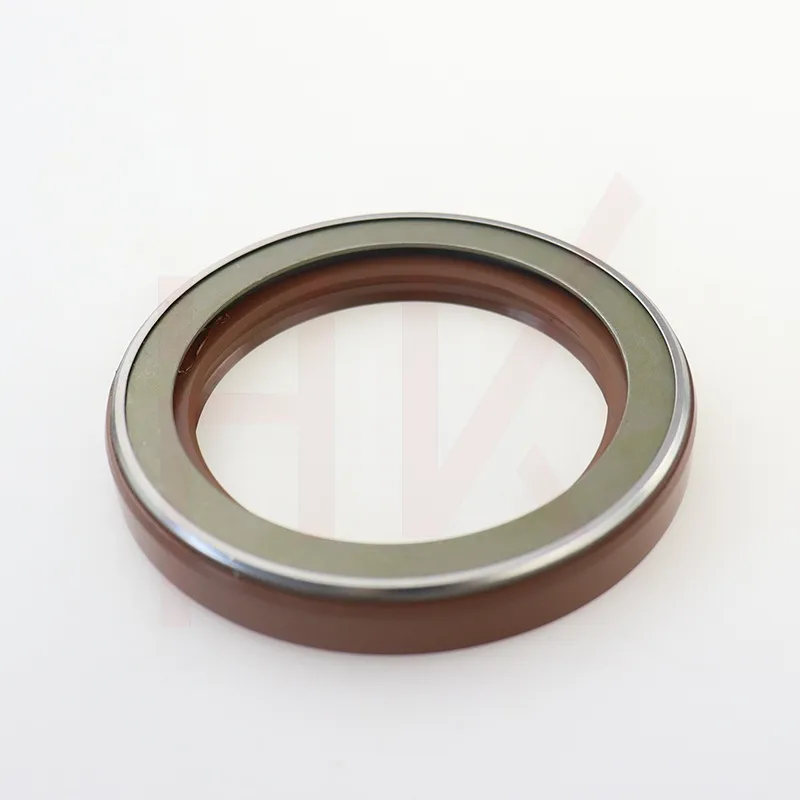नवम्बर . 30, 2024 18:32 Back to list
Rod Seal Wipers for Enhanced Performance and Durability in Hydraulic Applications
Understanding Rod Wiper Seals Importance, Function, and Applications
Rod wiper seals are essential components in various hydraulic and pneumatic systems, designed to enhance performance and longevity. They specifically prevent the ingress of contaminants while allowing smooth operation of rod-based mechanisms, such as those found in hydraulic cylinders, pneumatic actuators, and other machinery reliant on the precise movement of rods.
What are Rod Wiper Seals?
Rod wiper seals are typically situated at the outer edge of a cylinder where the rod exits. Their primary function is to wipe away any dust, dirt, or moisture that may accumulate on the rod's surface. This protective action is crucial as contaminants can lead to increased wear and tear, reduced efficiency, and potential failure of the hydraulic or pneumatic system.
Importance of Rod Wiper Seals
1. Contaminant Exclusion One of the main purposes of rod wiper seals is to keep foreign particles out of the hydraulic chamber. When a rod moves in and out, it creates a potential pathway for dust and debris. Rod wiper seals act as the first line of defense, actively removing these contaminants before they can enter the system.
2. Enhancing Performance By ensuring that the rod remains clean, wiper seals contribute to the overall efficiency of the system. They help maintain consistent pressure levels and prevent hydraulic fluid from leaking, which is crucial for the optimal performance of hydraulic machinery.
3. Extending Equipment Life The presence of dirt and other contaminants can significantly reduce the lifespan of hydraulic systems. Regular exposure can damage seals, increase friction, and result in mechanical failure. Rod wiper seals play a vital role in preserving the integrity of the equipment, thereby reducing maintenance costs and downtime.
Materials Used in Rod Wiper Seals
Rod wiper seals are made from various materials depending on the specific application and environment
. Common materials include- Rubber Often used for standard applications, rubber wiper seals provide a good balance between flexibility and durability. Certain rubber compounds are resistant to oil and extreme temperatures, enhancing their functionality.
rod wiper seal

- Polyurethane This material is known for its toughness and abrasion resistance. Polyurethane rod wipers are often used in more demanding environments where exposure to harsh chemicals or extreme conditions is common.
- PTFE (Teflon) PTFE wipers are ideal for high-temperature applications and offer excellent chemical resistance. They are less common but are chosen for specialized circumstances.
Applications of Rod Wiper Seals
Rod wiper seals are utilized in numerous sectors, including
- Construction Equipment Excavators, bulldozers, and cranes utilize rod wipers to keep hydraulic cylinders free of contaminants, ensuring reliable operation.
- Agricultural Machinery Tractors and harvesting equipment depend on rod wiper seals to maintain operational efficiency in dusty and muddy environments.
- Automotive Industry Hydraulic systems in various vehicles, including lifts and brakes, use rod wipers to enhance performance and safety.
- Manufacturing In industrial automation, rod wipers are crucial in robotic arms and assembly machinery, where precision is key.
Conclusion
In summary, rod wiper seals may seem like small components, but their significance in hydraulic and pneumatic systems cannot be understated. By preventing contaminants from entering critical areas, they protect equipment, enhance performance, and extend service life. Whether in construction equipment, agricultural machinery, or automotive systems, the role of rod wiper seals is vital for ensuring efficient and reliable operation. Proper selection and maintenance of these seals lead to improved machinery performance and lower operational costs, making them a crucial investment for any industry reliant on hydraulic systems.
-
TCN Oil Seal Metal Ring Reinforcement for Heavy Machinery
NewsJul.25,2025
-
Rotary Lip Seal Spring-Loaded Design for High-Speed Applications
NewsJul.25,2025
-
Hydraulic Cylinder Seals Polyurethane Material for High-Impact Jobs
NewsJul.25,2025
-
High Pressure Oil Seal Polyurethane Coating Wear Resistance
NewsJul.25,2025
-
Dust Proof Seal Double Lip Design for Construction Equipment
NewsJul.25,2025
-
Hub Seal Polyurethane Wear Resistance in Agricultural Vehicles
NewsJul.25,2025
-
The Trans-formative Journey of Wheel Hub Oil Seals
NewsJun.06,2025
Products categories
















